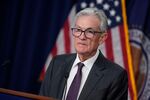石破茂首相は強行日程で臨んだトランプ米大統領との初会談を成功させたようだ。
トランプ政権は同盟国であるカナダに新たな関税を課すと発表。発動 は1カ月延期されたが、6日午後に日本を出発した石破氏の訪米前は日米安全保障条約 を防衛政策の基軸とする日本も関税の標的になるのではとの懸念が高まっていた。
石破氏はホワイトハウスで現地時間7日にトランプ氏との首脳会談 と共同記者会見を行い、8日夜に帰国。トランプ氏と良好な関係を築き、緊密な同盟の確認と経済関係の深化に向けたロードマップ(工程表)の合意を取り付けたようだ。
石破氏は9日、NHKの番組 に出演し、トランプ氏について「これから先、かなり落ち着いてじっくり話ができるなという印象を持った。相性は合うと思う」と話した。
日本が直面するリスクやトランプ氏が予測できない動きに出た可能性を考慮すると、安保同盟の再確認など主要議題を網羅つつ、より難しい問題には踏み込まなかった石破氏は、トランプ政権と良好な関係を築く幸先良いスタートを切ったと専門家はおおむね評価している。
トランプ氏が石破氏との共同会見で、「相互関税」をちらつかせたことで、日本も米国から高関税を課される可能性は残っているが、大局的に見れば、外交経験の乏しい石破氏だが現実的な成果を収めたと言えそうだ。
ひな型 石破氏のメッセージは、「米国第一」主義の政策で日本が支援できることに焦点を絞ったものだった。コンサルティング会社アジア・グループのワシントン在勤バイスプレジデント、ユカ・ハヤシ氏は、交渉を通じ取引(ディール)をまとめるトランプ氏のやり方に対応する、ひな型を提供するものだと指摘する。
ハヤシ氏によれば、日本は今回の首脳会談で予想を上回る成果を上げた。トランプ氏が暗殺未遂という試練に耐え、化石燃料採掘の規制撤廃を図り、日本に対しては防衛費増強に向けた動きを促したことなどに石破氏が触れ、トランプ氏を称賛。これが成功の要因だという。
「石破氏はホームランを打った」とハヤシ氏は語った。
石破首相とトランプ大統領(ホワイトハウスの大統領執務室、7日)
Photographer: Anna Rose Layden/UPI/Bloomberg
石破氏とトランプ氏の初顔合わせは、日米関係の難題を取り除く可能性さえ生み出した。トランプ氏は日本製鉄 が米USスチール を買収するのではなく、同社に大規模投資を行うことに期待を寄せていると発言した。
日本製鉄によるUSスチール買収の阻止を決めたのはバイデン前大統領だが、トランプ氏も米国をかつて象徴していた企業を日本製鉄が買う計画に反対していた。
石破氏は共同会見 で、今回の首脳会談の成果を踏まえ、「敬愛してやまないトランプ大統領と共に、日米関係の新たな黄金時代を築いてまいりたい」と述べた。
今回の首脳会談が浮き彫りにしたのは、バイデン氏が重点を置いていたグローバルな問題よりも、トランプ政権の優先分野に照準を定めるという日本側の明確な戦略転換だ。
複数の日本政府高官はインタビューで、日本の国益とトランプ氏の優先課題が重なる分野を重視したと明らかにした。
比較的容易に達成された成果の一つがエネルギー政策だ。日本はエネルギーのほぼ全てを輸入に頼っており、トランプ氏は米国でまだ開発されていないエネルギーの活用を公約に掲げている。
日本側は首脳会談で、米国からの液化天然ガス(LNG)輸入を増やすと述べ、アラスカからパイプラインでLNGを輸送するという野心的なプロジェクトへの協力に関心を表明した。
日本が具体的にどのような貢献をするのかについてはまだ曖昧だが、トランプ氏は記者会見で、こうした合意はバイデン前政権下では実現できなかった画期的なものだと称賛した。
関税 石破氏はトランプ氏との会談に先立ち、複数の歴代首相と日米関係について話し合って備えていた。その上で大統領執務室でのトランプ氏との最初のやり取りでは、同氏に対する称賛と、いすゞ自動車 とトヨタ自動車 による米工場新設・拡張など、日本による米国への新たな投資に関する詳細を織り交ぜて伝えた。
日本の対米貿易黒字 が続く場合は関税が選択肢となり得ると、トランプ氏が述べた際も、石破氏は終始落ち着いた様子だった。
同氏のゆっくりとした淡々とした話し方は、トランプ氏とのやりとりをぎこちないものにはしなかった。トランプ氏は就任から4カ月余りの石破氏を持ち上げ、「素晴らしい首相になると思う。非常に強い人物だ。非常に、非常に強い。私は彼を大いに尊敬している」と述べた。
米国が日本に新たな関税を課した場合、日本が報復を検討する可能性があるかと記者に尋ねられた際、仮定の質問には答えられないというのが日本の「定番の国会答弁」だと石破氏がかわすと、会見場は笑いに包まれた。
かつて在日米大使館で首席公使を務めたカート・トン氏は、石破氏がトランプ政権2期目の早い段階で会談を求めたが、その決意が正しかったことを今回の首脳会談は証明したと分析。
「ホワイトハウスがさまざまな問題で揺れている中で、ワシントンを訪問するのは石破氏のギャンブルだという人もいたが、石破氏はそれをやり遂げた」とトン氏は語った。
中国巡る懸念 確かに米国の対日関係は他の同盟国との関係に比べれば、それほど緊張したものではない。米国の対カナダ、対メキシコ関係を揺るがしている不法移民や麻薬といった問題は日本にはない。
またグリーンランドを巡るデンマークのような領土問題も存在せず、日本の対米貿易黒字はドイツやベトナムなどよりもはるかに少ない。
中国の軍事力増強に対する懸念についても、日米両国の利害は一致している。日本にとって今回の首脳会談における最重要目標に、日米安保へのコミットメント確認があったが、トランプ氏はこれを明確に示し、共同声明 で「日本の防衛に対する米国の揺るぎないコミットメント」が強調された。
それでも米国による新たな関税を巡る緊張関係に日本は巻き込まれ得ると、住友商事のチーフアナリストでワシントンを拠点としている渡辺亮司氏は想定。アラスカのLNGプロジェクトにおける日米協力の進展を注視する必要があると述べた。トランプ氏が今週発表予定だとしている相互関税は、日本、特に農産物に打撃を与える可能性もある。
ジョンズ・ホプキンズ大学のハル・ブランズ教授は、他の同盟国とは対照的に、日本は防衛費の増額を通じ米経済への貢献やアジアにおける米軍の負担軽減への取り組みをアピールできる強みがあると説明。トランプ氏が石破氏に防衛費を増やすよう要求するのではないかという予想も、一部ではあった。
だが、2027年度までに防衛費を国内総生産(GDP)比でこれまでの1%から2%に引き上げるという日本の方針を、トランプ氏は評価。一方で同氏はすでに北大西洋条約機構(NATO)加盟国には、対GDP比5%の国防支出を求めている。
現在はアジア・グループのマネジングパートナーを務めるトン氏は、今回の日米首脳会談について、トランプ政権下の米国に対し他の米友好国・同盟国がどう働きかけるべきかを描くロードマップの作成に寄与すると評価。「明らかに日本側はトランプ氏のスタイルや政策に合わせアプローチを調整した」と語った。
原題:Japan’s Ishiba Shows How to Work With Trump in First Summit (抜粋)



